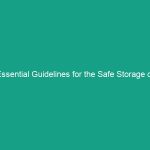Introduction
Good morning team,
Today, we are focusing on a vital aspect of our Workplace Safety protocol that often gets overlooked—chemical spill response. While everyone knows the importance of fire drills, mastering the Procedures for handling chemical spills is equally crucial for our Safety and well-being.
Understanding the right response to chemical spills can prevent accidents, protect our Environment, and save lives. So, let’s dive into why mastering chemical spill response is essential for all of us.
Understanding Chemical Spill Response
Chemical spill response refers to the procedures and actions taken to manage the accidental release of hazardous substances. In our workplace, where we handle various chemicals, understanding these procedures is critical.
Ignoring proper spill response can lead to serious consequences, including health risks, environmental damage, and costly cleanup efforts. Many employees believe that spills are rare or that they can be managed without formal Training, but this misconception can lead to dangerous situations.
Key Hazards, Risks, and Safety Considerations
When handling chemicals, various Hazards and risks can arise, including:
- Health Risks: Exposure to hazardous chemicals can cause respiratory issues, skin irritations, and other health problems.
- Environmental Risks: Improperly managed spills can contaminate soil and water sources, leading to long-term ecological damage.
- Legal and Financial Consequences: Failing to comply with safety Regulations can result in fines and increased liability for the company.
Real-world consequences of ignoring spill response protocols can be severe. For instance, in a past incident at a manufacturing plant, a chemical spill led to a complete evacuation and a costly cleanup that took weeks to resolve. This incident could have been mitigated with proper training and response procedures.
Best Practices, Procedures, & Actionable Advice
To effectively manage a chemical spill, follow these step-by-step safety procedures:
1. Assess the Situation
As soon as a spill occurs, evaluate the situation. Identify the type of chemical spilled and the extent of the spill. Ensure that you are wearing the appropriate Personal Protective Equipment (PPE) such as gloves, goggles, and masks.
2. Evacuate the Area
If the spill is significant or poses immediate danger, evacuate all personnel from the area. Use the nearest exit and avoid the spill zone.
3. Alert Emergency Services
Contact your supervisor or the designated safety officer. Provide them with information about the spilled substance and the measures taken.
4. Contain the Spill
If it is safe to do so, use spill containment kits to limit the spread of the chemical. This might involve using absorbent materials or barriers.
5. Clean Up Safely
Follow the specific cleanup procedures outlined in the Safety Data Sheet (SDS) for the spilled chemical. Only trained personnel should handle the cleanup.
6. Document the Incident
After the spill is contained and cleaned, document the incident thoroughly. This record will be useful for future training and compliance audits.
In addition to these steps, here are some practical tips to improve our spill response:
- Regularly participate in spill response drills to ensure everyone knows their roles.
- Keep spill response materials easily accessible and clearly marked.
- Stay informed about the chemicals you are working with by reviewing their SDS regularly.
Regulations, Standards, and Compliance
Compliance with OSHA regulations and other safety Standards is paramount in maintaining a safe workplace. According to osha’s Hazard Communication Standard, all employees must be aware of the chemicals they handle and the risks associated with them.
Failure to comply with these regulations can result in severe penalties and increased liability for our organization. Regular training and adherence to safety protocols not only protect employees but also contribute to a safer workplace environment.
Employee Engagement & Discussion
Let’s take a moment to discuss. What safety challenges have you encountered related to chemical spills? Have you seen areas where our current procedures could improve? Your thoughts and experiences are invaluable in enhancing our safety practices.
Conclusion & Key Takeaways
In summary, mastering chemical spill response is critical for our safety and well-being. By understanding the hazards, following Best Practices, and staying compliant with regulations, we can create a safer workplace for everyone.
Remember, safety is everyone’s responsibility. I encourage you all to prioritize these practices and share your insights with your colleagues.
Thank you for your attention and commitment to safety. Let’s work together to ensure our workplace remains safe and secure!


